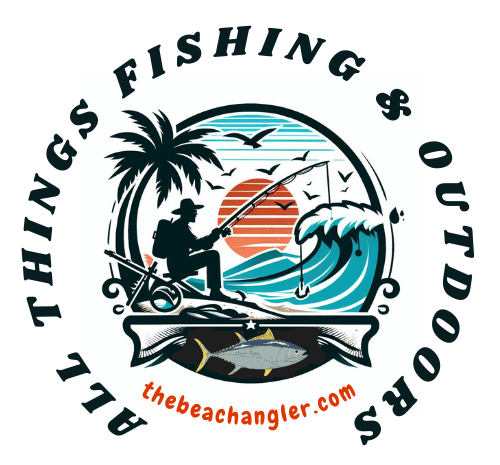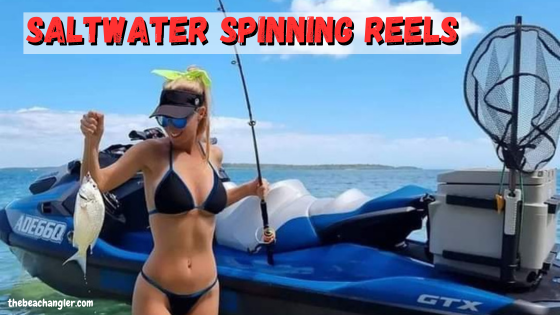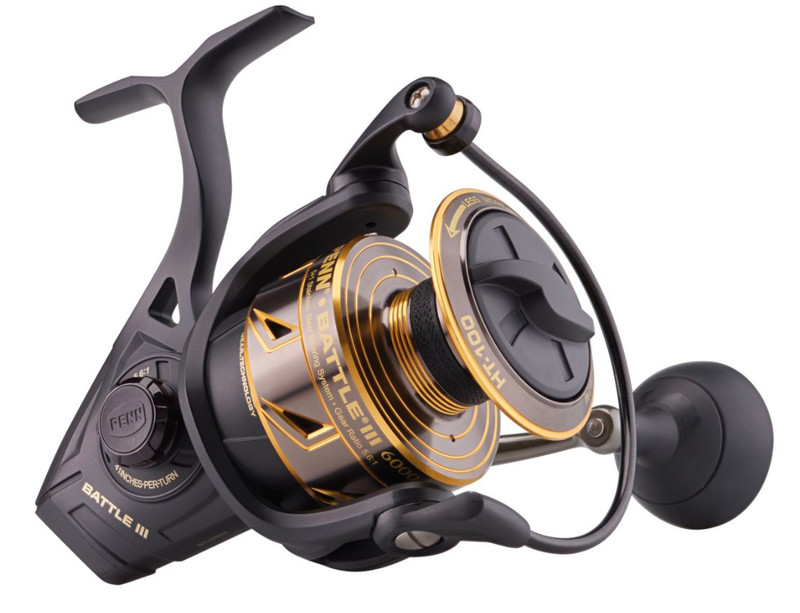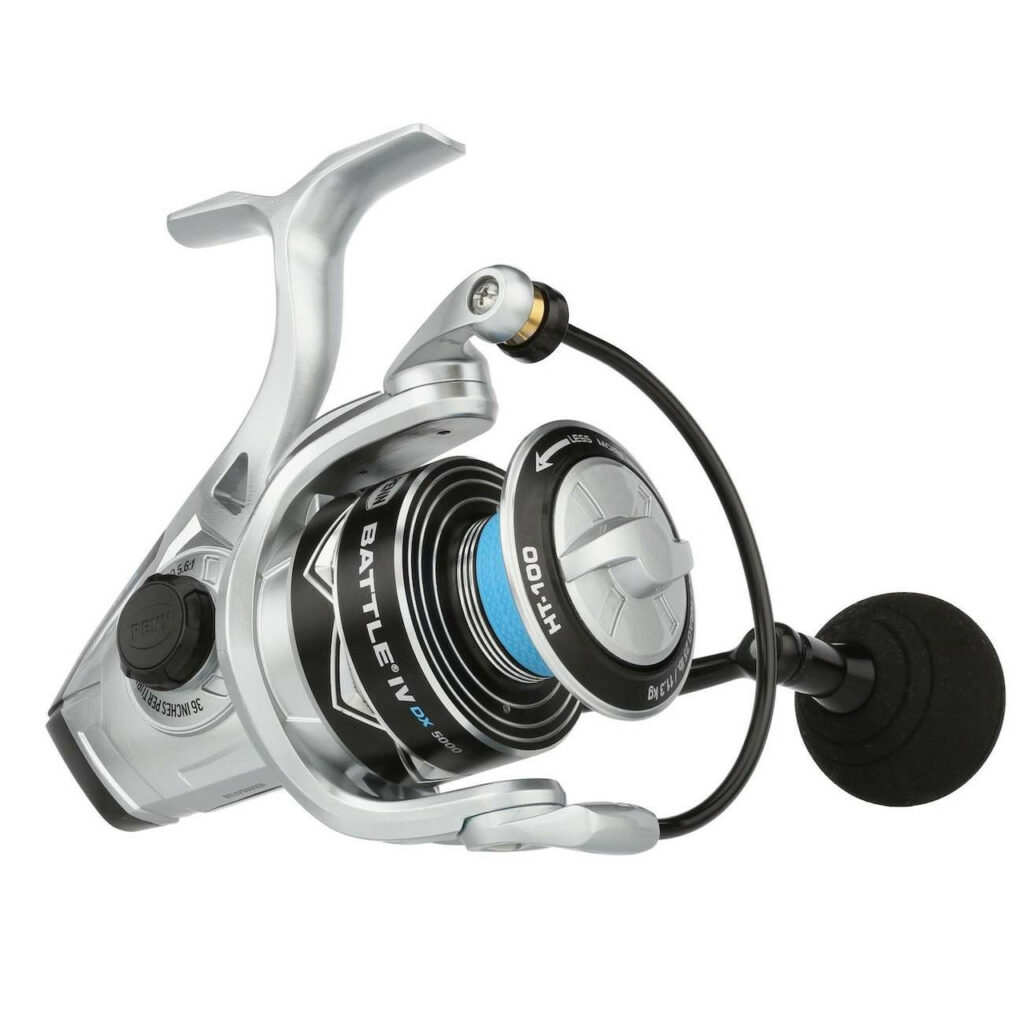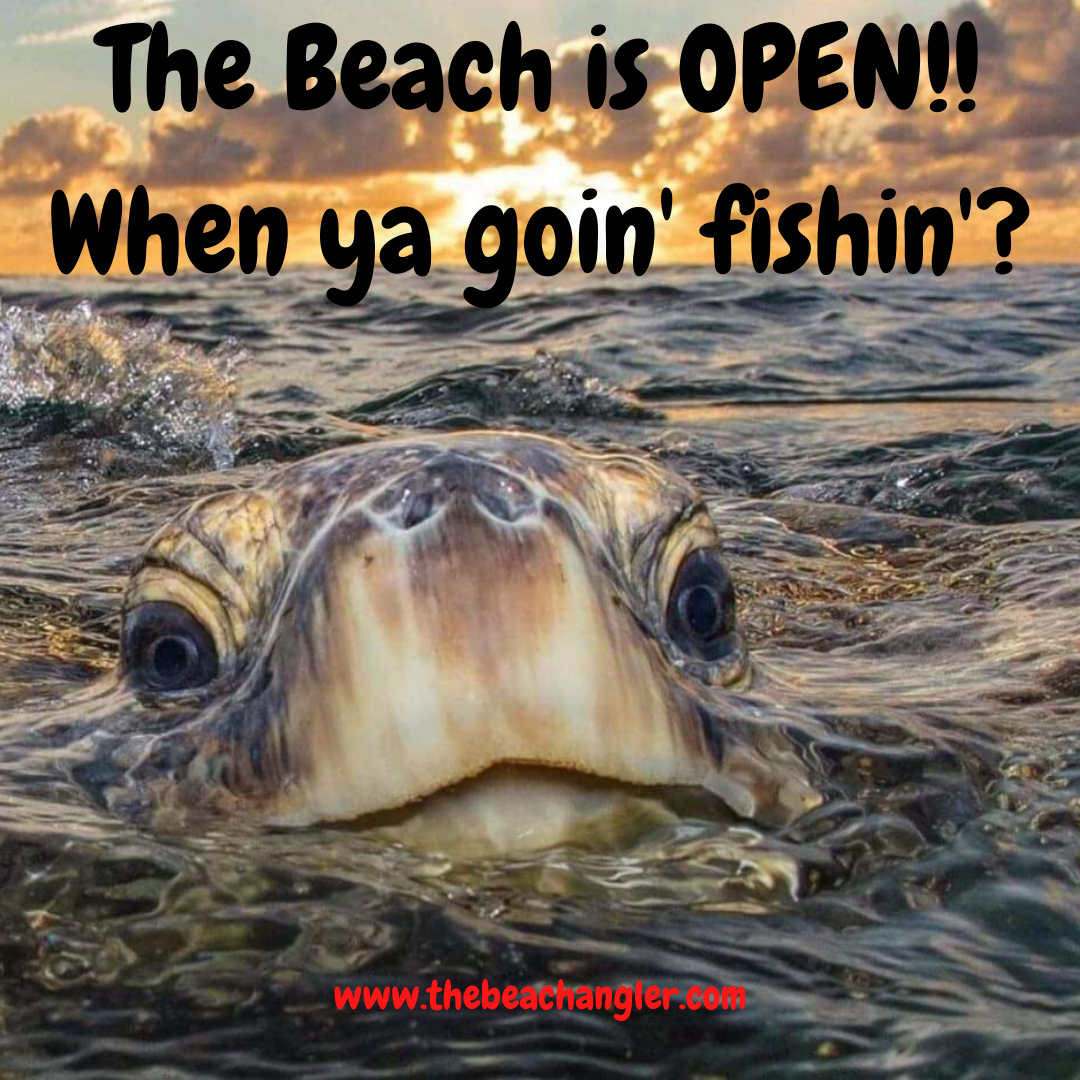Saltwater spinning reels are an essential tool for any angler looking to take on the challenges of saltwater fishing. These reels are designed to handle the harsh conditions and powerful fish that are found in saltwater environments. They come in a variety of sizes and styles to suit different fishing techniques and species.
Quick Look
- Saltwater spinning reels are designed to handle the challenges, and corrosive environment, of saltwater fishing and come in a variety of sizes and styles.
- When choosing a saltwater spinning reel, consider factors such as size, line capacity, and drag system, where you will be fishing and what fish you will be targeting.
- Top models on the market include the Shimano Stella SW, Daiwa Procyon MQ LT, and PENN Authority. Proper maintenance and use can help ensure your reel performs at its best.
If you’re new to saltwater fishing, it can be overwhelming to choose the right spinning reel for your needs. There are many factors to consider, such as the reel’s size, line capacity, and drag system. Additionally, there is an ongoing debate among anglers about whether spinning reels or baitcasting reels are better for saltwater fishing.
Come along, and we’ll provide an overview of saltwater spinning reels, including their pros and cons, features to look for, and top models on the market. We’ll also offer tips on how to use and maintain your reel to ensure it performs at its best.
| Shimano Stella SW | Diawa Procyon MQ | Penn Authority |
|---|---|---|
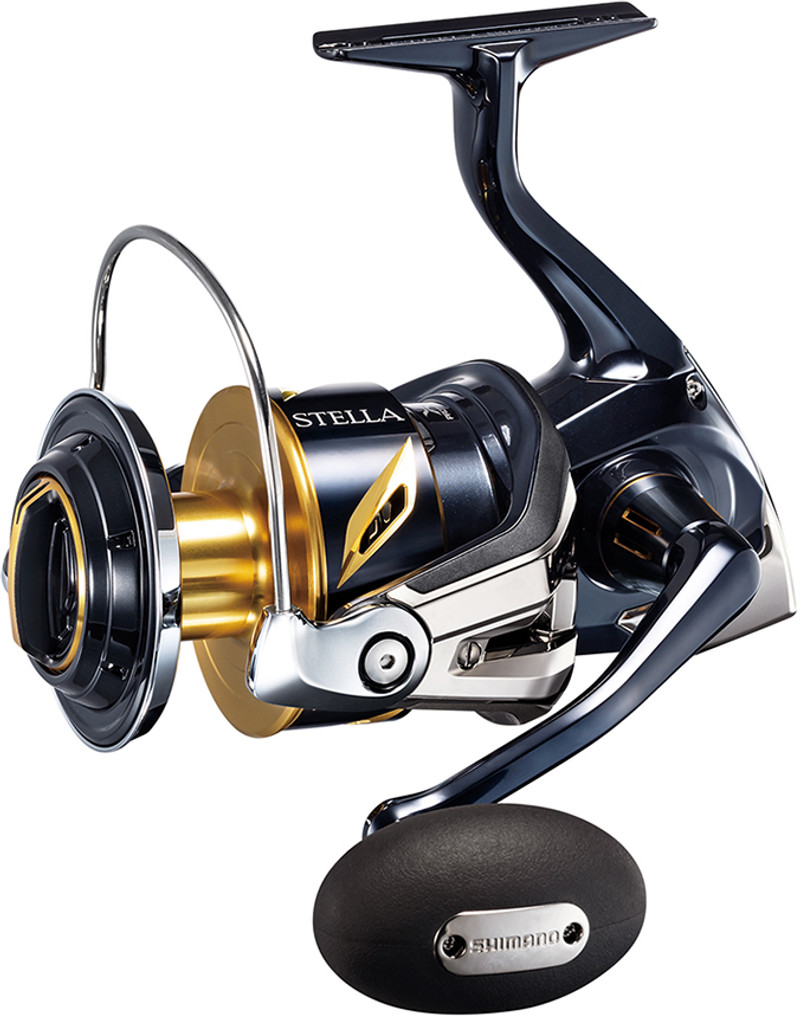 | 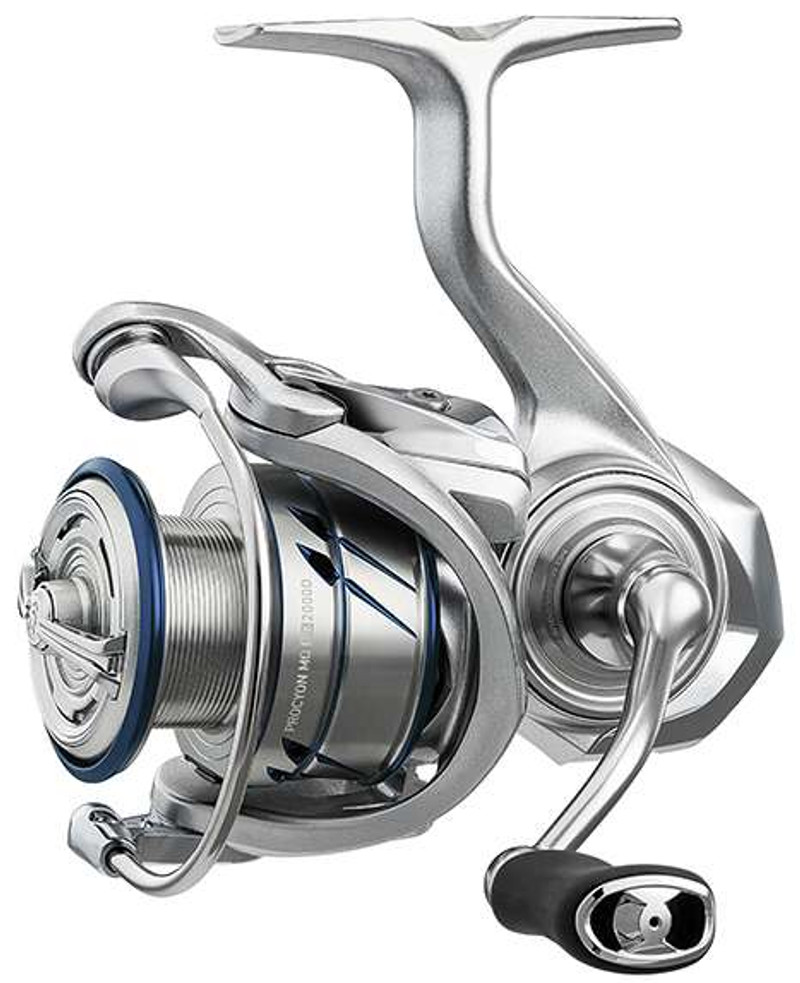 | 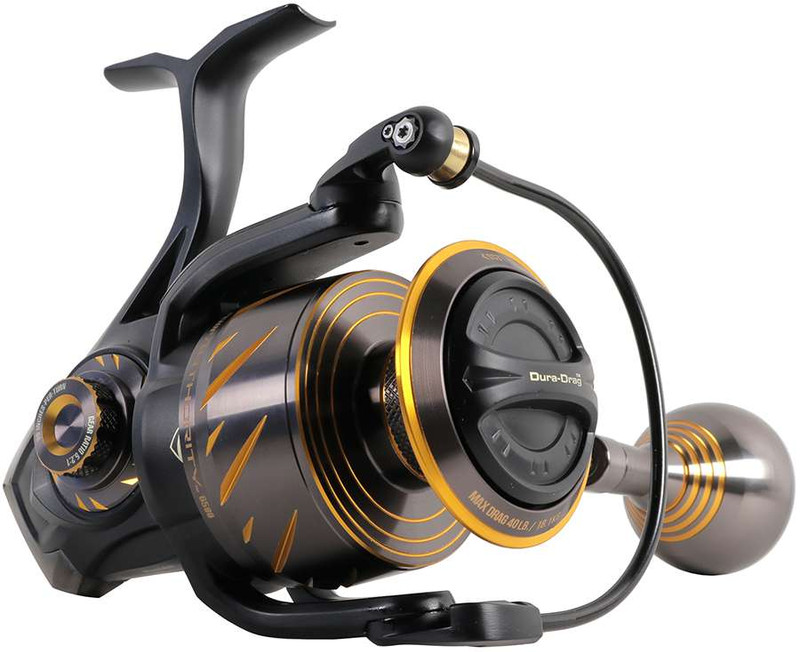 |
| CHECK PRICE & REVIEWS | CHECK PRICE & REVIEWS | CHECK PRICE & REVIEWS |
Understanding Saltwater Spinning Reels
If you’re an avid angler, you know that saltwater fishing requires specialized gear. Saltwater spinning reels are designed to withstand the harsh ocean conditions and handle the big fishes. These reels are different from freshwater spinning reels in terms of their construction and features.
Saltwater vs Freshwater Spinning Reels
One of the most significant differences between saltwater and freshwater spinning reels is the materials used. Saltwater reels are made of high-end corrosion-resistant materials, such as stainless steel, aluminum, and carbon fiber, to withstand the corrosive saltwater environment. In contrast, freshwater reels are typically made of less durable materials, such as graphite or plastic.
Another difference between saltwater and freshwater spinning reels is their drag systems. Saltwater spinning reels have more powerful drag systems to handle the stronger and bigger fish that are commonly found in saltwater. These drag systems are usually sealed to prevent saltwater from entering and damaging the reel’s internal components.
When it comes to gear ratios, saltwater spinning reels typically have lower gear ratios than freshwater reels. This is because saltwater fishing requires more power to reel in larger fish, and a lower gear ratio provides more torque to do so.
It’s important to note that not all spinning reels marketed as “saltwater” reels are suitable for saltwater fishing. Some manufacturers simply add a coating to their freshwater reels and market them as saltwater reels. It’s essential to do your research and choose a reel specifically designed for saltwater fishing to ensure its durability and performance.
In summary, saltwater spinning reels are designed to withstand the harsh saltwater environment and handle the big fishes that are commonly found in saltwater. They are made of high-end corrosion-resistant materials, have more powerful drag systems, and lower gear ratios than freshwater reels. When choosing a saltwater spinning reel, it’s important to choose one specifically designed for saltwater fishing to ensure its durability and performance.
The Debate: Spinning Reels vs Baitcasting Reels
When it comes to saltwater fishing, there is an ongoing debate about which reel is better: spinning reels or baitcasting reels. Both have their pros and cons, and ultimately the decision comes down to personal preference and the type of fishing you plan on doing.
Spinning Reels
Spinning reels are generally easier to use and more versatile than baitcasting reels. They are a great choice for beginners and experienced anglers alike. Spinning reels are also more affordable than baitcasting reels, making them a great option for those on a budget.
One of the biggest advantages of spinning reels is their ability to cast lightweight lures and baits with ease. They are also great for casting into the wind and can handle a variety of fishing techniques, including jigging, trolling, and live bait fishing.
Baitcasting Reels
Baitcasting reels are known for their accuracy and power. They are a great choice for experienced anglers who are looking for more control over their casts and want to target larger fish. Baitcasting reels are also great for fishing in heavy cover and around structure.
One of the biggest advantages of baitcasting reels is their ability to handle heavier lures and lines. They also provide more control over the placement of your bait or lure, allowing for more precise casts and presentations.
Which One Should You Choose?
Ultimately, the decision between spinning reels and baitcasting reels comes down to personal preference and the type of fishing you plan on doing. If you are a beginner or plan on fishing with lightweight lures and baits, a spinning reel may be the better choice. If you are an experienced angler looking for more control and power, a baitcasting reel may be the better option.
Regardless of which reel you choose, it is important to choose a high-quality reel that is designed for saltwater fishing. Look for reels with corrosion-resistant materials, strong drag systems, and high line capacity to ensure that your reel can handle the harsh saltwater environment.
Maintenance of Saltwater Spinning Reels
Saltwater spinning reels are essential tools for any angler who wants to catch fish in the ocean. However, these reels require regular maintenance to keep them functioning at their best. Here are some tips to help you maintain your saltwater spinning reel:
Cleaning the Reel
Cleaning your saltwater spinning reel after every use is crucial. Saltwater can be corrosive and can cause damage to the reel’s components. Here is a step-by-step guide to cleaning your saltwater spinning reel:
- Remove the spool and wipe it down with a clean cloth.
- Use a soft-bristled brush to remove any dirt or debris from the reel’s exterior.
- Apply freshwater to the reel’s exterior with a spray bottle and wipe it down with a clean cloth.
- Use a Q-tip or toothbrush to clean hard-to-reach areas, such as the bail, roller, and handle.
- Apply a small amount of reel oil to the moving parts of the reel, such as the bail and handle.
Lubricating the Reel
Lubricating your saltwater spinning reel is vital to keep it functioning smoothly. Here are some tips for lubricating your reel:
- Use a high-quality reel oil to lubricate the moving parts of the reel.
- Apply a small amount of oil to the bail, handle, and roller.
- Use a grease to lubricate the gears and other internal components of the reel.
- Apply a small amount of grease to the gears and other internal components.
Storing the Reel
Storing your saltwater spinning reel correctly is essential to keep it in good condition. Here are some tips for storing your reel:
- Store your reel in a dry, cool place.
- Keep your reel away from direct sunlight.
- Store your reel in a reel bag or case to protect it from dust and moisture.
- Remove the line from your reel before storing it.
By following these tips, you can keep your saltwater spinning reel in excellent condition and ensure that it functions correctly every time you use it.
Pros and Cons of Saltwater Spinning Reels
Saltwater spinning reels are a popular choice among anglers for their versatility and ease of use. However, they also come with their own set of advantages and disadvantages. Here are some pros and cons of saltwater spinning reels to consider before making your purchase:
Pros of Saltwater Spinning Reels
| Spinning Reel Pros | Description |
|---|---|
| Easy to use: | Saltwater spinning reels are easy to use, making them a great choice for beginners and experienced anglers alike. They require little to no maintenance and can be used in a variety of fishing situations. |
Versatile: | Saltwater spinning reels can be used to catch a wide range of fish species, from small panfish to large game fish. They are also suitable for both freshwater and saltwater fishing. |
Lightweight: | Many saltwater spinning reels are lightweight, making them easy to handle and reducing fatigue during long fishing sessions |
| Long casting: | Saltwater spinning reels allow for Long casting, which is important when targeting specific fish species or fishing in the surf. |
| Affordable: | Saltwater spinning reels are generally more affordable than other types of reels, making them a great choice for anglers on a budget. |
Cons of Saltwater Spinning Reels
| Spinning Reel Cons | Description |
|---|---|
| Less power: | Saltwater spinning reels are generally less powerful than other types of reels, such as baitcasting reels. This can make it more difficult to reel in large fish or fish in strong currents. |
| Limited line capacity: | Saltwater spinning reels typically have a limited line capacity, compared to similar sized conventional reels, which can be a disadvantage when targeting larger fish species. |
| Prone to line twist: | While they are less likely to “backlash”, saltwater spinning reels are prone to line twist, which can result in tangles and lost fish. |
| Less accurate in windy conditions: | Saltwater spinning reels can be less accurate in windy conditions, as the line can be affected by the wind and result in inaccurate casts. |
Overall, saltwater spinning reels are a great choice for anglers looking for a versatile and easy-to-use reel. However, they do come with some limitations, such as less power and limited line capacity. Consider your fishing needs and preferences before making your purchase to ensure that you choose the right reel for your needs.
Top Saltwater Spinning Reels
When it comes to saltwater fishing, having the right spinning reel can make all the difference. Here are some of the top saltwater spinning reels on the market in 2023:
The PENN Authority is a top-of-the-line spinning reel that is perfect for saltwater fishing. It features advanced technology and engineering to provide comfort, power, and reliability. With its durable construction and smooth operation, this reel is sure to help you catch even the biggest fish.
Shimano Stella SW

The Shimano Stella SW is another top-quality spinning reel that is designed for saltwater fishing. With unparalleled strength, reliability, and smoothness, this reel is a work of art that is built to take your fishing experience to the next level. It is a bit pricey, but if you’re serious about saltwater fishing, it’s worth the investment.
Daiwa Procyon MQ LT
If you’re looking for a lightweight spinning reel that is still powerful enough for saltwater fishing, the Daiwa Procyon MQ LT is a great option. It features a carbon fiber body and rotor, which helps to reduce weight without sacrificing strength or durability. This reel is perfect for long days of casting and reeling in big fish.
Okuma Helios HSX-20
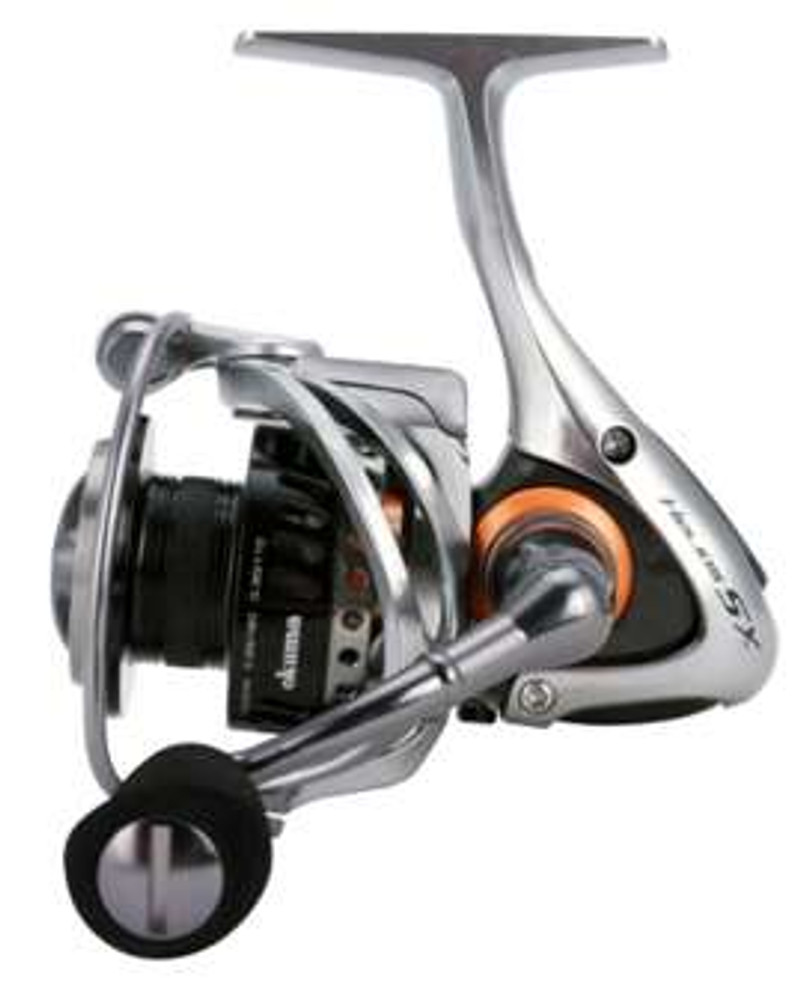
The Okuma Helios HSX-20 is a great spinning reel for anglers who want a balance of performance and affordability. It is lightweight and easy to handle, but it still has the strength and durability needed for saltwater fishing. With its carbon fiber construction and corrosion-resistant design, this reel is built to last.
Penn Battle III
The Penn Battle III is another great option for saltwater fishing. It features a full-metal body and durable aluminum bail wire, which makes it strong enough to handle even the toughest fish.
This reel is also designed to be easy to use, with a smooth drag system and comfortable handle. Overall, it’s a great choice for anglers of all skill levels.
Penn Battle IV
The New Penn Battle IV spinning reels were just released this September 2024. They feature the very latest in technology with significant improvements in both durability and performance.
With all brass gears, carbon fiber drag washers, an all-aluminum body, and “Hydro-Armour” seals these reels will give you many years of reliable performance in even the harshest of marine environments.
Available in a wide range of reel sizes from the small 1000 to the big 10000 series there is a reel for any fishing situation.
No matter which saltwater spinning reel you choose, make sure to do your research and choose one that is right for your needs. With the right reel, you’ll be able to enjoy all the excitement and adventure that saltwater fishing has to offer.
Tips for Choosing the Right Saltwater Spinning Reel
When it comes to choosing the right saltwater spinning reel, there are a few factors to consider. Here are some things to keep in mind:
1. Size and Weight: – The size and weight of your saltwater spinning reel will depend on the type of fishing you plan to do. If you’re targeting larger fish, you’ll need a heavier, more durable reel. On the other hand, if you’re fishing inshore or for smaller species, a lighter reel may be sufficient.
2. Drag System: – The drag system is an important part of any saltwater spinning reel. It’s what allows you to control the amount of resistance on the line when you’re reeling in a fish. Look for a reel with a smooth, reliable drag system that can handle the size and weight of the fish you’re targeting.
3. Gear Ratio: – The gear ratio of a saltwater spinning reel determines how quickly you can retrieve your line. A higher gear ratio means you can retrieve the line faster, which can be helpful when you’re trying to reel in a fast-moving fish. However, a lower gear ratio can provide more power and torque, which can be useful when you’re targeting larger species.
4. Materials and Durability: – Saltwater can be tough on fishing gear, so it’s important to choose a reel that’s built to withstand the elements. Look for a reel made from high-quality materials that can stand up to saltwater corrosion and wear and tear.
5. Price: – Saltwater spinning reels can vary widely in price, so it’s important to set a budget and stick to it. Keep in mind that a higher price tag doesn’t always mean better quality, so be sure to do your research and read reviews before making a purchase.
By considering these factors and doing your research, you can choose the right saltwater spinning reel for your needs and enjoy a successful day on the water.
Features to Look for in Saltwater Spinning Reels
When it comes to choosing the best saltwater spinning reel for your fishing needs, there are several features to consider. Here are some key factors to look for:
Corrosion Resistance: – Saltwater is highly corrosive, which means your reel must be able to withstand it. Look for reels with corrosion-resistant components such as stainless steel or aluminum. Some reels also have water-resistant seals to prevent saltwater from entering the internal parts.
Drag System: – The drag system is an important feature to consider when choosing a saltwater spinning reel. It helps you control the amount of resistance the fish feels when it pulls on the line. Look for reels with a smooth, reliable drag system that can handle the weight and strength of the fish you are targeting.
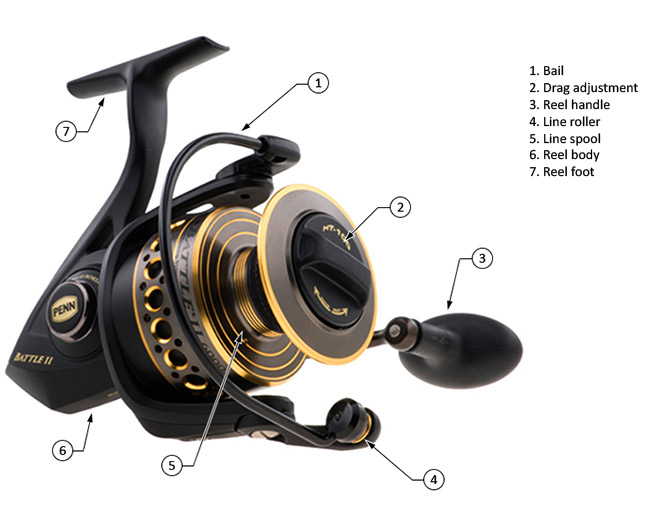
Ball Bearings: – Ball bearings help reduce friction and improve the overall performance of the reel. Look for reels with a high number of ball bearings for smoother operation. However, keep in mind that more ball bearings don’t always mean better performance. The quality of the bearings is just as important as the quantity.
Gear Ratio: – The gear ratio determines how quickly the spool turns when you crank the handle. A higher gear ratio means the spool turns faster, which is useful for quickly reeling in fish. However, a lower gear ratio provides more power and torque, which is important when fighting larger fish.
Line Capacity: – Make sure the reel you choose has enough line capacity for the type of fishing you plan to do. Look for reels with a line capacity that matches the weight and strength of the fishing line you plan to use.
Weight and Size: – The weight and size of the reel can affect your comfort and performance while fishing. Look for a reel that is lightweight and comfortable to hold for extended periods. However, keep in mind that larger fish may require a heavier and larger reel.
By considering these key features, you can choose a saltwater spinning reel that is durable, reliable, and suitable for your fishing needs.
How to Use Saltwater Spinning Reels
Saltwater spinning reels are a popular choice among anglers due to their ease of use and versatility. Here are some tips on how to use them if you’re not familiar with spinning reels:
1. Choose the Right Reel
Before using a saltwater spinning reel, make sure you have the right one for the job. Look for reels that are specifically designed for saltwater fishing, as they are typically more durable and resistant to corrosion. Consider the size and weight of the reel, as well as the type of fish you will be targeting.
2. Set the Drag
The drag system on a spinning reel is what allows you to control the amount of tension on the line. It is important to set the drag correctly to prevent the line from breaking or the fish from escaping. To set the drag, tighten the knob on the top of the reel until it is snug, then loosen it slightly to allow for some give.
3. Cast the Line
To cast the line, hold the rod with both hands and point the tip towards the target area. Hold the line with your index finger and flip the bail open with your other hand.
Swing the rod back and then forward, releasing the line with your finger at the right moment to send the bait flying towards the fish.
4. Reel in the Line
Once you have cast your line, wait for a bite. If you feel a tug on the line, start reeling in quickly to set the hook. Once the fish is hooked, use the reel to slowly and steadily bring it in, keeping the line taut and the rod tip up.
5. Maintain the Reel
After using your saltwater spinning reel, it is important to clean and maintain it properly to prevent damage and ensure its longevity. Rinse the reel with fresh water after each use and dry it thoroughly. Lubricate the moving parts regularly and store it in a dry, cool place when not in use.
By following these tips, you can use your saltwater spinning reel with confidence and catch more fish on your next trip.
Troubleshooting Common Issues with Saltwater Spinning Reels
Saltwater spinning reels are a popular choice for anglers due to their versatility and ease of use. However, like all fishing equipment, they can encounter problems from time to time. Here are some of the most common issues with saltwater spinning reels and how to troubleshoot them:
Line Twists and Tangles
Line twists and tangles are a common problem with spinning reels and can occur due to a variety of reasons, such as long-term use, casting issues, or using the wrong type of line. To avoid line twists, make sure to spool your line correctly and use a line that is appropriate for the type of fishing you are doing. If you do encounter line twists, try to untangle the line by reeling it in slowly while holding the line taut.
Drag System Malfunctions
The drag system is an essential component of a spinning reel, and if it malfunctions, it can make it difficult to reel in fish. If you notice that the drag system is not working correctly, try adjusting the drag knob to increase or decrease the tension. If this does not work, you may need to disassemble the reel and clean or replace the drag washers.
Casting Issues
Casting issues can occur due to a variety of factors, such as incorrect spool tension, line twist, or a faulty bail system. To troubleshoot casting issues, make sure that the spool tension is set correctly and that the line is not twisted or tangled. If the problem persists, check the bail system for any damage or wear and replace any faulty components.
Bail System Malfunctions
The bail system is responsible for guiding the line onto the spool and can encounter problems such as misalignment or damage. If you notice that the bail system is not working correctly, check for any damage or wear on the bail arm and roller. If necessary, replace any faulty components or realign the bail arm.
Handle or Cranking Mechanism Issues
The handle or cranking mechanism can encounter problems such as stiffness or jamming, making it difficult to reel in fish. If you notice any issues with the handle or cranking mechanism, check for any debris or dirt that may be causing the problem. If this does not work, you may need to disassemble the reel and clean or replace any faulty components.
By troubleshooting these common issues with saltwater spinning reels, you can keep your equipment in top condition and enjoy a successful day of fishing.
Understanding Reel Sizes and Line Capacities
When it comes to saltwater spinning reels, understanding the reel size and line capacity is crucial. The size of the reel determines the amount and strength of the line it can hold, which in turn affects the type and size of fish you can catch.
Spinning reels are typically labeled with numbers that correspond to their size. The smaller the number, the smaller the reel, and the lighter the line it can handle. Conversely, larger numbers indicate larger reels that can handle heavier lines. The following table provides a general guideline for matching reel size to line rating and suitable fish:
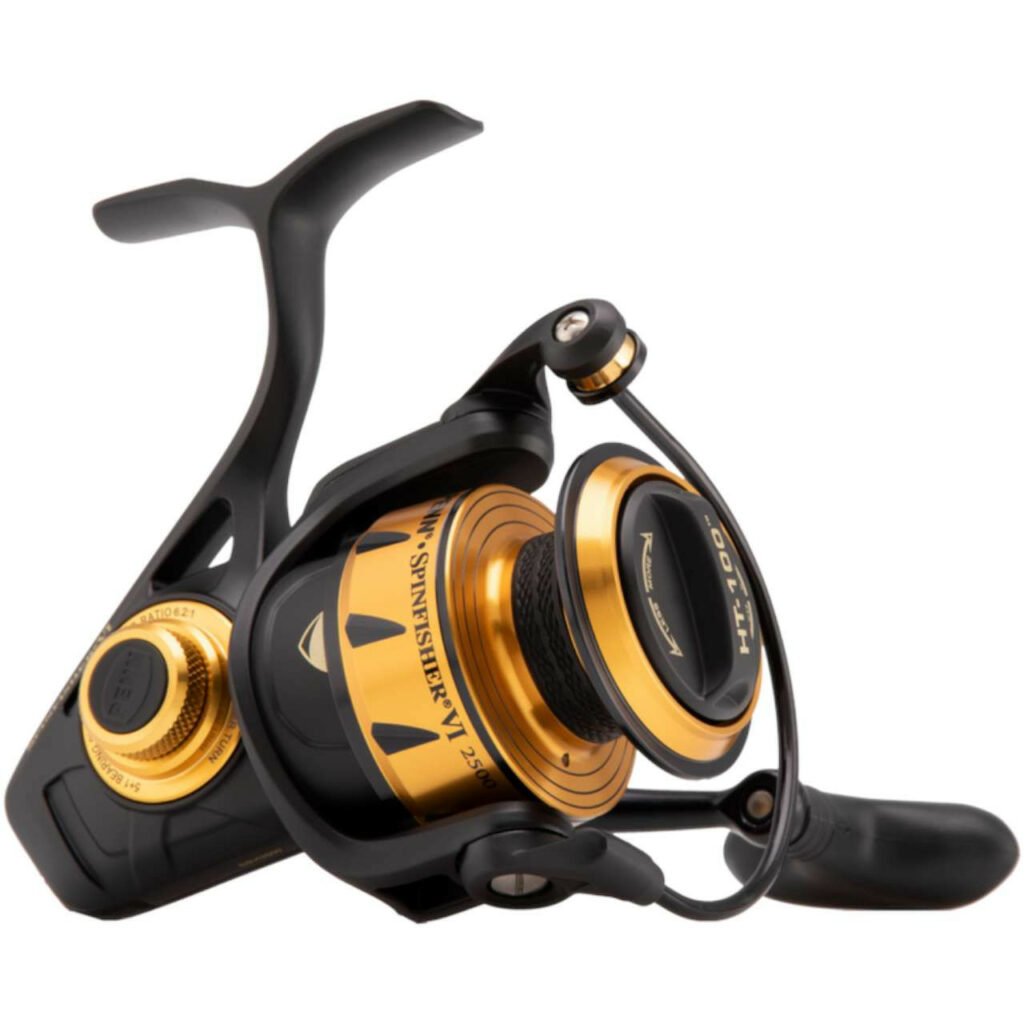
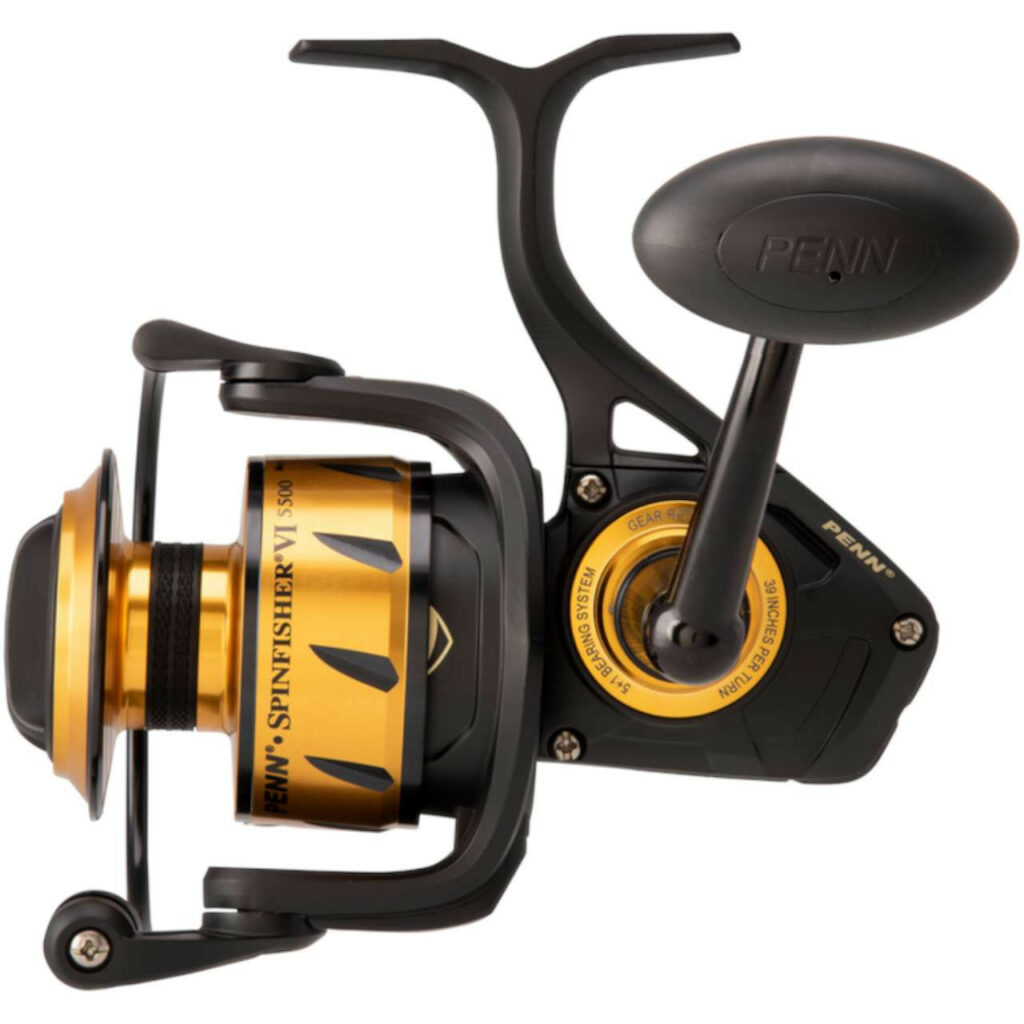
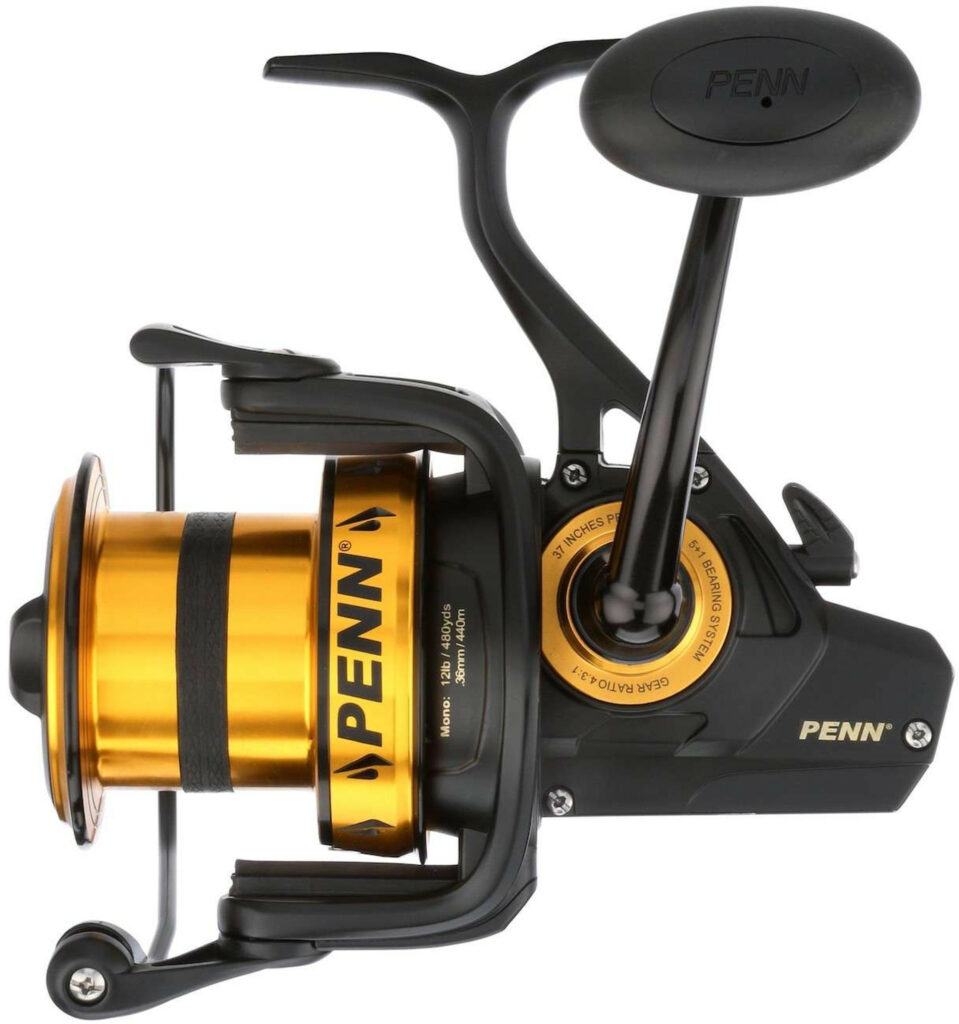
| Reel Size | Line Rating | Suitable for |
|---|---|---|
| 1000-3500 | 2-10 lbs | Small to medium-sized fish |
| 4000-5500 | 6-14 lbs | Versatile fishing applications |
| 6000+ | 20+ lbs | Bigger fish and heavier lines |
It’s important to note that these are general guidelines and not hard and fast rules. The type of fishing you plan to do, the species of fish you are targeting, and the conditions of the water will all affect your choice of reel size and line capacity. Line capacity refers to the amount of line, of a given line rating, that the reel can hold, and is typically listed in yards or meters for monofilament line and in pounds or kilograms for braided line.
It’s important to choose a reel with a line capacity that is appropriate for the type of fishing you plan to do. If you plan to fish in deep water or target larger fish, you’ll need a reel with a higher line capacity. Conversely, if you plan to fish in shallow water or target smaller fish, you can get away with a reel with a lower line capacity.
Overall, understanding reel sizes and line capacities is crucial when selecting a saltwater spinning reel. By matching the reel size and line capacity to the type of fishing you plan to do and the species of fish you are targeting, you’ll be able to maximize your chances of success on the water.
Saltwater Spinning Reels Frequently Asked Questions

What is the best reel size for saltwater fishing?
The best reel size for saltwater fishing depends on the type of fish you are targeting. For smaller fish, a 2000-4000 size reel is suitable, while larger fish require a 5000-8000 size reel. It is important to choose a reel that can handle the weight and strength of the fish you are trying to catch.
What is a good spinning reel for saltwater?
Some of the best spinning reels for saltwater fishing include the Shimano Stella SW, the Penn Spinfisher VI, and the Daiwa BG. These reels are designed to handle the harsh saltwater environment and the strength of saltwater fish.
Why do saltwater fishermen use spinning reels?
Saltwater fishermen use spinning reels because they are versatile, easy to use, and can handle a variety of fishing techniques. Spinning reels are also less prone to backlash and tangles, making them a popular choice for beginners and experienced anglers alike.
What are the top-rated saltwater spinning reels under $100?
Some of the top-rated saltwater spinning reels under $100 include the KastKing Sharky III, the Penn Battle IV, the Abu Garcia Max X, and the Okuma Avenger ABF. These reels offer a great balance of affordability and performance, making them a popular choice for budget-conscious anglers.
What are the benefits of using a heavy-duty saltwater fishing reel?
Heavy-duty saltwater fishing reels are designed to handle the weight and strength of large saltwater fish. They are more durable and can withstand the harsh saltwater environment. Using a heavy-duty saltwater fishing reel can increase your chances of landing a big catch.
Which brand makes the best saltwater spinning reels?
There’s a Saltwater Spinning Reel Waiting for You
As you can see, there are plenty of options when it comes to saltwater spinning reels. But, armed with this information, you are equipped to make the best choice for you and your particular fishing style and situation. It doesn’t matter if you are brand new to saltwater fishing, or like me, have many decades of experience, there is a saltwater spinning reel for you.
If you are fortunate enough to live near a tackle shop, I recommend you visit with them. You can try out the various options and see how they feel and work.
Plus they should be able to give you added insights and recommendations as to which reel would work best for you. And, you can check out rods and line, if you need them, while your there.
As always, stay safe, enjoy the journey and please try to leave it cleaner than you found it. If you have any comments, questions, ideas or suggestions please leave them in the comment section below and I’ll get back to you asap.
You can follow us on Facebook: Rex The Beach Angler, Instagram: thebeachangler7, Twitter: @AnglerBeach, and YouTube: Man Art Creations.

P.S. – Thanks so much for checking out our blog we really appreciate it. Just so you know, we may receive a commission if you click on some of the links that appear on our site. This helps us keep our content free and up-to-date for everyone. We appreciate your support!

A life long surf fisherman with 50+ years of experience, I am also an avid hunter and outdoorsman. I will be sharing my passion for the outdoors with you so be prepared for hunting, fishing, camping, hiking and more. Along with gear reviews and the latest trends and innovations in the outdoor industry.
